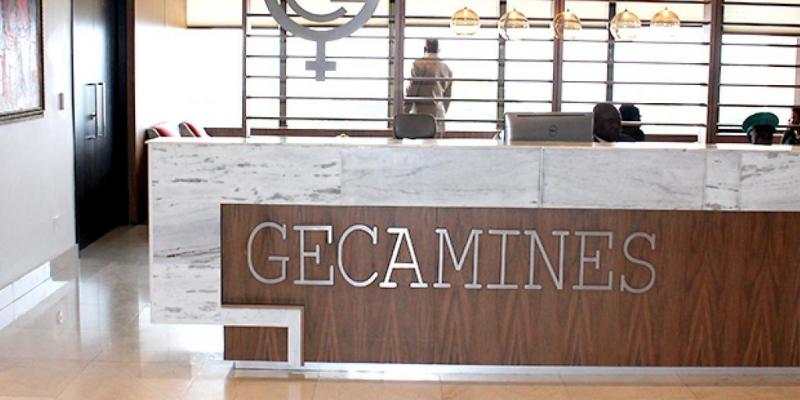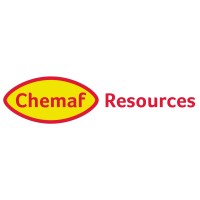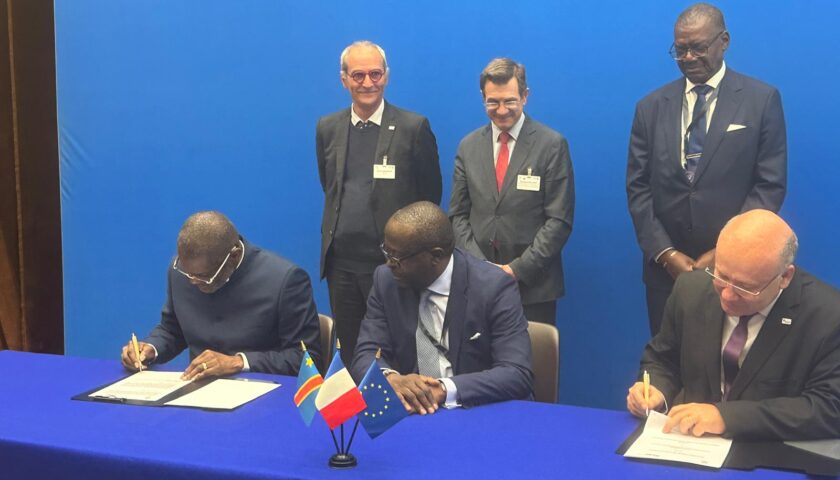JOHANNESBURG (Mineweb) –
For listed mining companies everywhere, this year has been all about stock prices facing headwinds, along with relentless pressure on CEOs.
The benchmark stock, BHP Billiton, the world’s biggest diversified resources group, saw its stock price in US dollar terms peak out in the latter stages of 2010. Given the wobbles in the global economy, the fall from there has been relatively modest, from around US$26.00 a share to recent trades around US$19.00. Vale, the world’s No 2 miner by market value, has seen its stock price fall by just over 50%, to current levels around US$17.00 a share.
Over the past 12 months, Vale and Anglo American have underperformed, probably on the back of a heavier exposure to developing markets, where regulatory uncertainty has been on the rise, over the past two years, in particular. This week in Johannesburg, outgoing Anglo American CEO Cynthia Carroll decried a number of factors that had contributed to uncertainty in this country, and appealed, in effect, for improved leadership at all levels.
BHP Billiton, as mentioned, has performed better, on a relative basis, along with the likes of Rio Tinto and Xstrata. Freeport McMoRan, which has a stock price history that would leave any investor giddy, has done all right. The stock price is around US$38.00 a share, from US$60.oo or so in the latter stages of 2010. No doubt some speculators and also investors will remember how this stock price plunged from over US$60.00 a share to less than US$10.00 during 2008.
At the trough, Freeport seemingly represented one of the buys of the century. The stock is characterized by its ability to generate heavy cash flows, and, in line with other most-valuable mining stocks, its strength in riding through the cycles. The most valuable mining companies own – or, more accurately, are custodians of – the world’s biggest mining assets, which are further coveted for low cost profiles and long lives.
Further top value factors can be identified in management experience and ability, and diversification. This much has been seen in the succession of CEOs that have come and gone, or are going, over the past year or so. In hindsight, Roger Agnelli, who was replaced as Vale CEO by Murilo Ferreira in May 2011, seems to have had impeccable timing; since then, the group’s overexposure to iron ore has been shown up, along with its poor record in diversification.
Vale has long ranked as the world’s biggest and lowest cost iron ore miner, at its operations in and around the famed Carajás deposits. While each US$1 drop in the iron ore price cuts about US$300m a year from Vale’s revenue, there have been several years this decade when Vale has banked untold billions of dollars. These riches triggered a strategy of diversification, which has so far produced pretty miserable results. Add to that the regulatory risks in Brazil, and the underperformance of the stock price has come as little surprise.
In some ways, Vale’s somewhat uncertain future loops back to 1997, when Anglo American was one of the preferred bidders for a controlling stake in Vale. As the bidding proceeded in Vale’s privatisation, Anglo American’s board of directors reached a point where it decided that the price was going to be too “expensive”.
The “Brazil Consortium”, led by steel manufacturer CSN, eventually bought a controlling stake of 41.7% of Vale for US$3.14bn. Since then, Vale’s market value (as a whole) has at times risen above US$200bn (current levels are around US$88.5bn). Vale’s record outside of iron ore is under the microscope, not only acquisitions, but also in-house projects.
Vale is apparently aware of the concerns. This week, it announced an investment budget for 2013, involving capital expenditures of US$10.1bn for project execution and US$5.1bn dedicated to sustaining existing operations, along with US$1.1bn for R&D. Vale was careful to emphasise that its “priority has shifted from the marginal volume to the capital efficient volume, a move that has deep implications for the way we manage capital”.
There has been more than a feast of other eye-popping number-events that the top miners have produced. Rio Tinto has taken years to banish the ghost of spending US$38bn in cash on the Alcan acquisition in 2007, only to later write-off tens of billions in impairments. The timing was a total disaster: in 2009 Rio Tinto was forced into a rights issue, raising US$15bn from its shareholders.
Unlike his peers at other big miners, Rio Tinto CEO, Tom Albanese, who drove the Alcan acquisition, seems to be under no pressure to leave. It may be recalled that Rio Tinto trumped Alcoa in its bid for Alcan, signalling just how high the bidding had gone.
But, while Aluminium has been a great underperformer in the metals complex, perhaps yet more victims have been taken by nickel, mainly across 2006 and 2007. Xstrata paid a monumental US$18.9bn in cash for nickel-copper digger Falconbridge. Vale then outbid Xstrata in 2006 for Inco, also paying US$18.9bn in cash. In 2007 Russia-based Norilsk outbid Xstrata for LionOre, paying US$5.8bn in cash for operations that today are mainly under care and maintenance.
Xstrata continued its belief in nickel into 2008, paying US$2.9bn in cash for Australian nickel specialist Jubilee Mines. The collapse in nickel prices – from around US$25 a pound in 2006 to US$5 a pound in 2008 – took a heavy toll. Nickel prices have never really recovered, mainly due to new low-grade-ore extraction technologies pioneered in China.
In January 2009, BHP Billiton closed the relatively new Ravensthorpe nickel complex, in Australia, and took impairments running into billions of dollars, including the halting of Yabulu, a processing plant. Both interests were later sold.
All of Xstrata’s expensive buys took place under CEO Mick Davis, who has long remained in office, and is leaving because Xstrata is being subsumed by its largest shareholder, Glencore. BHP Billiton CEO Marius Kloppers inherited most of the hiccups referred to at that group, but took it on the chin on August 3 this year when investors witnessed a seemingly new kind of policy in executive remuneration.
BHP Billiton announced that it had impaired its Fayetteville shale gas assets – acquired from Chesapeake Energy in February 2011 – to the tune of US$2.84bn. The group also announced a US$450m charge against the carrying value of its Nickel West assets in Australia.
In the wake of the write downs, Kloppers, and Mike Yeager, CEO of the group’s petroleum division, advised the group remuneration committee that “they do not wish to be considered for a bonus for the 2012 financial year”. The conduct was all the more remarkable given that in both cases, exogenous forces had driven down the prices for shale gas and nickel. It had nothing to do, as such, with the conduct of the two executives. Even so, Kloppers is now under pressure to quit BHP Billiton.
Who wants to be a mining CEO? There has even been pressure at gold companies: witness the circumstances under which the CEOs of Barrick, Kinross and Newmont have been replaced.
But Anglo American’s Cynthia Carroll seems to be a special case, especially in South Africa. On 26 October, South Africa’s Public Investment Corporation (PIC) and Government Employees Pension Fund (GEPF) released an announcement, where Carroll’s resignation was noted. The PIC, Anglo American’s largest South African shareholder, holding 7% of the shares on behalf of the GEPF, said that “whilst depressed commodity prices are partly to blame for the group’s disappointing performance, we believe that capital allocation, poor project management and poor operational performance have contributed the bulk of the observed underperformance of Anglo, relative to its peers.
“It is easy, with the benefit of hindsight, to point to these decisions as strategic missteps and therefore shareholders should observe some sympathy for Ms Carroll. However, it is understandable that these strategic aspects will rest squarely on the CEO’s shoulders, as the custodian of the company’s strategy”.
However, as mentioned, even a cursory examination of Anglo American’s relative stock price performance during Carroll’s tenure as CEO contradicts the PIC’s observations. As also mentioned, there has been some relative underperformance over the past year, along with Vale. Both groups have been facing heavy regulatory headwinds in Brazil and Anglo American, separately, in South Africa.
However, the PIC made no reference at all to regulatory and related risks; instead it went a lot further on other fronts, specifically stating that “Poor capital allocation has eroded value in [Anglo American] over the last few years”. Then there is the extraordinary criticism that “of added concern to GEPF and PIC is the lack of emerging markets representation, given that most of [Anglo American’s] operations are situated in emerging markets, particularly SA.
“For an example, around 37% of group assets are still based in South Africa and generate 55% of group operating profit. Our view is that this urgently needs to be addressed to make the composition of the board more reflective of the geographic positioning of the company”.
This week, Carroll, speaking in Johannesburg, said that mining companies everywhere “need certainty as to the rules under which they will operate”. At the Gordon Institute of Business Science, she argued that: “They will not invest if there is a fear of arbitrary and unpredictable regulatory change. The regulatory debate in South Africa has been going on for a very long time. And it is still not completely resolved. The spectre of nationalisation has been laid to rest. But the need to guard against damaging regulatory changes remains”.



